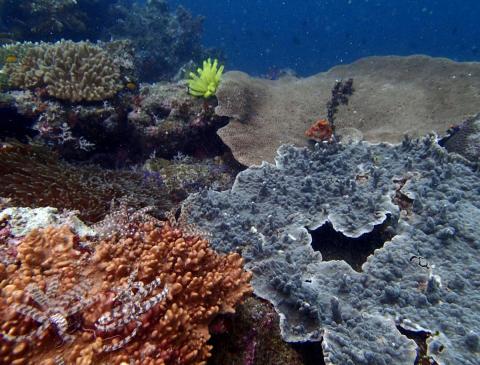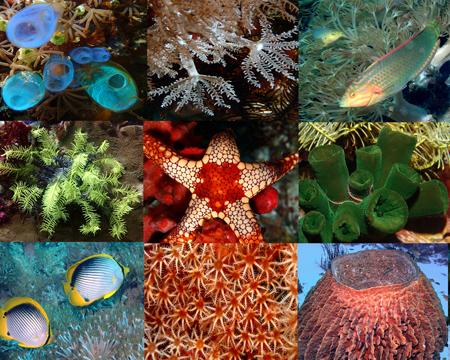
Believe it or not, millions of tiny delicate coral animals create the enormous coral reefs that can even be seen from outer space. The coral polyps (cnidarians related to anemones and jellies) live in a colony. Together they build a mineral skeleton from calcium carbonate, which creates a complicated reef structure with a myriad of shapes and sizes.
Coral structures provide endless habitats for other animals to live. It’s impossible to talk about corals without talking about the entire reef ecosystem. Coral reefs are the most diverse of any marine ecosystem, often referred to as the rainforests of the sea. A quarter of all marine species depend on coral reefs for food or shelter, or both.
Coral Reefs Feed Us
Reef-building corals are found only in shallow, tropical seas. Almost 6,000 species of fish depend on the reefs; many spend their entire lives there. Some feed on algae that would otherwise smother the corals. Others, like parrotfish, eat the corals themselves and poop out the crunchy remains that become the sand around the reef. Clownfish find safety in sea anemones chasing off the anemone’s predators – a symbiotic relationship. Larger fish prey on those small fish. And large, predatory oceanic species, like sharks, and tuna, visit reefs to hunt. Sea turtles visit to feed on algae and rest.

An incredible diversity of invertebrates – crabs, worms, shrimp, sea stars, sea cucumbers and others – live their entire lives on the reef. Some make their home permanently in the branches of corals, or in other animals, like anemones that settle on coral. If you could look closely with a hand lens you would see a huge variety of animals, from sponges to tunicates.
Not only are coral reefs essential for thousands of organisms, they provide incredible value to people. An estimated one billion people depend on coral reefs for food and income from fishing. And coral reef tourism brings in revenue for those countries with flourishing reefs. The structure of the reef itself provides another benefit: forming a natural barrier, they protect islands from battering waves from huge ocean storms.
What the Rainforests of the Sea are Telling US
Sadly, a warming ocean, caused climate change, threatens these vital ecosystems. Scientists say nearly one-third of the Great Barrier Reef’s coral were killed when ocean temperatures spiked in 2016. They fear sections of the reef will not recover if global warming continues at the current pace. The entire system should be on the endangered species list.
Read more about coral reef ecosystems.
Watch this, Chasing Coral, and see some beautiful coral reefs and learn what you can do to help protect them.
















